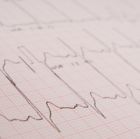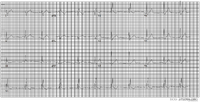Main Page: Difference between revisions
Jump to navigation
Jump to search
mNo edit summary |
mNo edit summary |
||
| Line 8: | Line 8: | ||
<div style="font-size:162%; border:none; margin:0; padding:.1em; color:#000;">Welcome to [[Frequently_Asked_Questions|ECGpedia]], </div> | <div style="font-size:162%; border:none; margin:0; padding:.1em; color:#000;">Welcome to [[Frequently_Asked_Questions|ECGpedia]], </div> | ||
<div style="top:+0.2em; font-size:95%;">a free electrocardiography (ECG) tutorial and textbook to which anyone can contribute ,<br /> designed for medical professionals such as cardiac care nurses and physicians.</div> | <div style="top:+0.2em; font-size:95%;">a free electrocardiography (ECG) tutorial and textbook to which anyone can contribute ,<br /> designed for medical professionals such as cardiac care nurses and physicians.</div> | ||
<div id="articlecount" style="width:100%; text-align:center; font-size:85%;">ECGpedia has received more than 1. | <div id="articlecount" style="width:100%; text-align:center; font-size:85%;">ECGpedia has received more than 1.700.000 visits from 224 countries.</div> | ||
<div id="articlecount" style="width:100%; text-align:center; font-size:85%;">Also visit our new [www.textbookofcardiology.org|Textbook of Cardiology].</div> | |||
|} | |} | ||
<!-- PORTAL LIST ON RIGHT-HAND SIDE --> | <!-- PORTAL LIST ON RIGHT-HAND SIDE --> | ||
Revision as of 21:04, 31 January 2014
|
Contributors
Main Authors
|
ECGs
R.B.A. van den Brink, MD PhD, AMC, The Netherlands; Vincent de Rover, RN, AMC, The Netherlands; R.W. Koster, MD PhD, AMC, The Netherlands; K.J. Rooyaards, MD, OLVG, the Netherlands; L.R.C. Dekker, MD PhD, M. Meuwissen, MD, PhD; I.A. Khan, MD; M.L.J.M. van de Wetering, MD; D. Kuys; K. Arkenbout, MD, PhD |
Corrections, additions and other contributionsI.A.C. van der Bilt, MD; T.T. Keller, MD, PhD, Bart Duineveld, Abdelghani Bouhiouf, Sabriena Henderson, Amon Heijne, A.O. Verkerk; A.C.G. van Ginneken, K.H.W.J. Ten Tusscher, K. Goldin, MD, S. Rijkenberg, J. van der Hoek, Sebastiaan H. Hols. |
Popular items
|



